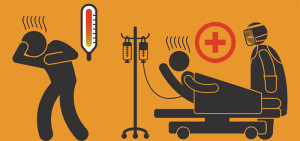
Librarians consistently struggle with how to cover the concepts they need to teach in a short amount of time instructors allot them, all the while making their instruction engaging and interactive. Some are embracing the flipped (or inverted) classroom method, which turns the traditional teaching approach upside down in order to enhance and expand time with students. Here’s how it works: Instead of a lecture in class and hands-on work at home, instructors assign material to be reviewed ahead of time, allowing for problem-solving activities during class time.
The method is not new; literature classes traditionally follow a similar model in which students read assigned texts as homework and come to class prepared for discussion. The renewed focus is a result of technological innovations that allow instructors to transfer a lecture into something portable that can be viewed or listened to outside of class.
For librarians, using a flipped classroom approach means students view or listen to prerecorded lessons on how to search a particular database or develop search terms before they attend the library session. Class time is then spent applying these concepts with hands-on activities.
Engaging students in active-learning activities during class gives them an opportunity to think critically about what they are learning, something often lacking in traditional library instruction.
Flipping the classroom, however, is not as simple as it sounds. Creating tutorials and podcasts can be time-consuming and may require knowledge of special software, although technological innovations and open-source software are making the process easier. The award-winning Guide on the Side (AL, “The Guide on the Side,” May/June 2012) from the University of Arizona allows librarians to quickly create interactive tutorials. TED-Ed has a “flip this video” feature that allows users to easily add quizzes and open-ended questions to a YouTube video. Using this technology, however, assumes that all students have access to the software, equipment, or internet connection, which is not always be the case.
Without a standard lecture to prescribe the class format, the control of the instruction and content is no longer solely in the hands of the librarian.This type of teaching cannot be scripted, and unexpected questions and problems will crop up, but ultimately students have a greater command of their inquiry and learning. The success of the class also depends on the instructor. For students to complete the out-of-class activities prior to their library visit, the instructor must assign the work and ideally offer some type of credit for completing it.
At the University of Nevada, Las Vegas, we have started to flip a portion of the library instruction for English composition classes. Undergraduate Learning Librarian Erin Rinto and Instructional Designer Frederic Rauber created a tutorial that students complete prior to attending class that helps them narrow and focus their research topic. Librarians build on the assignment in class by working with students to develop keywords and search for and evaluate sources. School librarians are also on board. Kim Sprankle, instructional librarian at Northfield Mount Herman School in Gill, Massachusetts, uses Guide on the Side to create online tutorials for grades 9–12 and calls it a “game changer” that better prepares students for their library session.
Since the flipped classroom is still young, there is little conclusive evidence to determine whether this approach improves student learning. However, anecdotal evidence suggests the hands-on learning and group activities hold students’ attention more than a traditional lecture format. I personally appreciate the opportunity to get out from behind the lectern and work more actively as students start their research journey.


